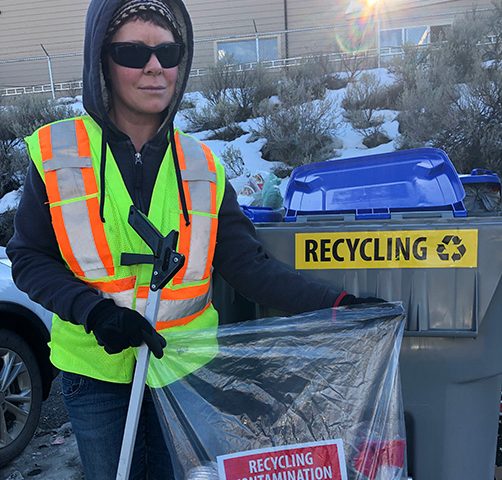City of Kamloops looks to better educate residents on recycling


Posted in: News Item
Date Posted: 2020-01-31
Organization Name: City of Kamloops
The City of Kamloop’s Sanitation Section is checking recycling containers (carts and bins) as part of ongoing efforts to better educate residents and to help reduce contamination – materials that should not be included with packaging and paper recycling. While this process has been in place since joining the Recycle BC program in 2017, continued high levels of contaminants in the city’s recycling program has resulted in increased efforts to combat this issue, including increased education, inspection, and enforcement.
The city signed an agreement with Recycle BC in April 2017 to be a collector under the producer-funded recycling program for packaging and paper products, which operates across the province. Under this agreement, the City must reduce contamination levels to three percent or less. Meeting this target helps Recycle BC find end markets for the materials that are collected. One of the most successful strategies to reduce the amount of unaccepted material collected in the program is through an inspection and enforcement process.
Recycling is inspected prior to collection by a crew of city staff. Items placed in recycling carts that are not accepted in the program such as plastic bags, glass and books are tracked and, where possible, removed from recycling. The resident is informed of the unaccepted items placed in recycling through a tag left on the cart.
“A lot of the contamination we are seeing are materials that are recyclable at depots only,” says Graham Lamont, the city’s Sanitation and Sign Shop Supervisor. “Curbside and multi-family recycling bins and carts are for plastic and metal containers, cartons, paper and cardboard only. Things like glass, soft plastics (like plastic bags), foam packaging, electronics, scrap metal and clothing must be recycled elsewhere, like a depot.”
New for 2020, unaccepted items found in carts may be placed in clear plastic bags and left as an education piece for the resident. This tactic helps ensure that the resident understands which items are accepted and which are not, using the visual reference as opposed to relying on generic language, such as “flexible plastic packaging.” This method was adapted from the City of Surrey’s model as a best practice, and is recommended and endorsed by Recycle BC.
Each inspection is electronically tracked and recorded, and staff leave recycling guides and reusable recycling bags to help educate residents about what is accepted in the program. If a cart is found with a large amount of unaccepted material, it is not collected and the resident must remove the contamination prior to next collection. In cases where there is misuse of recycling carts (garbage, construction waste, yard waste, etc.), staff issue warning letters to residents informing of the bylaw infraction of placing unaccepted items in recycling that will result in a $100 fine if the misuse continues.
The city is also checking multi-family bins and carts. Because of the communal nature of these containers, the city is working with property and building mangers to help educate tenants and make changes to collection to help reduce contamination. This effort appears to be making a difference, as the contamination rate for multi-family bins and carts dropped from 26 percent in the first quarter of 2019, to 11 percent in the third quarter. The City hopes to see this number continue to decrease.
In Kamloops, items that are recyclable but do not fall within the home collection program may be taken to a Recycle BC depot or to other recycling collectors. The city offers the free Waste Wise app, which allows residents to search for a specific item and to learn if and where it can be taken for recycling. Information about what is accepted in the city’s recycling program and what is accepted at recycling depots is also available online at Kamloops.ca/Recycling.
